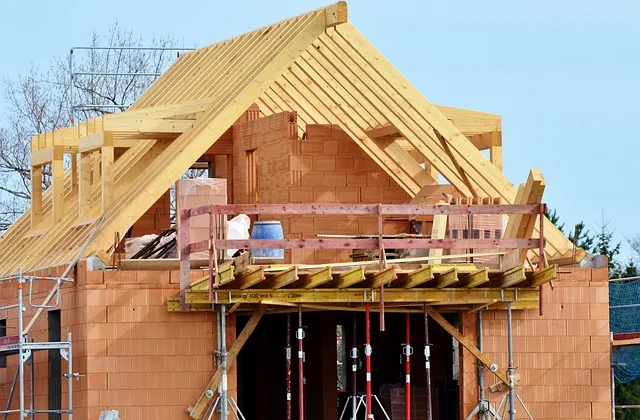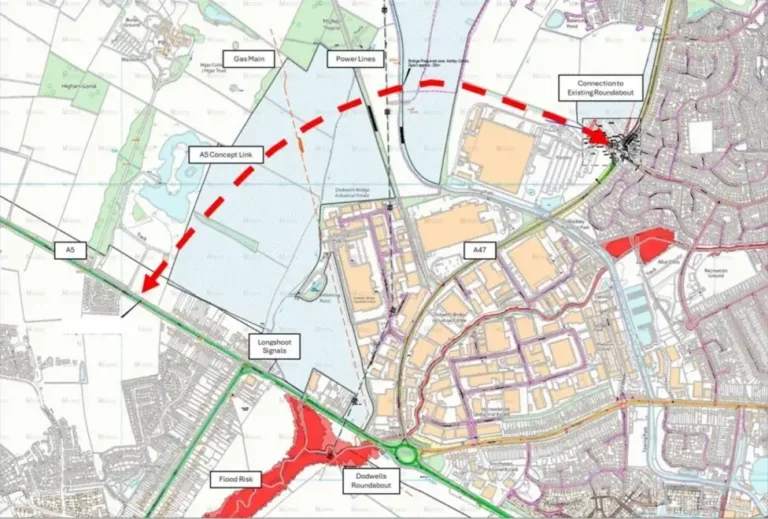
The number of homes that must be built each year in Leicester and Leicestershire is set to rise under new government targets aimed at addressing the nation’s housing crisis. This ambitious initiative, announced by Labour’s housing secretary and deputy prime minister Angela Rayner, is part of a broader strategy to construct 1.5 million new homes across the country over the next five years.
The new targets represent a significant increase from those set by the previous Conservative government, with the annual national requirement rising from 305,223 to 371,541 homes. Rayner emphasized the urgency of the housing shortage, stating that the new quotas would be mandatory for the first time, moving away from the previous advisory status.
Leicester and Leicestershire’s New Housing Targets
Leicester City
Leicester city is an exception in this overhaul, with its target decreasing by 745 homes annually, from 2,435 to 1,690. Despite this reduction, the city will need to intensify its building efforts, as it currently averages only 1,014 homes per year.
Charnwood Borough
Charnwood will see a slight decrease in its target from 1,115 to 1,012 homes annually. However, with an average of 763 homes built each year recently, it will still need to increase its output to meet the new quota.
North West Leicestershire (NWL)
NWL faces a substantial increase, with its annual target rising by 264 homes, from 357 to 621. Fortunately, the district has already been exceeding its targets, averaging 789 new homes per year.
Hinckley and Bosworth
Hinckley and Bosworth’s targets will jump from 432 to 689 homes annually, a rise of 257. Although the borough has been meeting its current targets, it will need to ramp up construction to meet the new requirements, as its current average is 535 homes per year.
Blaby
Blaby is set for a significant hike, with an increase of 230 homes annually, bringing its target from 329 to 559. The district has struggled in recent years, building an average of 290 homes annually, and will need to accelerate its building rate to meet the new goal.
Harborough
Harborough will see its target increase by 196 homes, from 510 to 706 annually. The district is well-positioned to meet this new target, as it currently averages 981 homes per year, well above both its current and proposed quotas.
Oadby and Wigston
Oadby and Wigston’s new target will rise by 191 homes, from 198 to 389 annually. The borough has been averaging 232 new homes per year, indicating a need to increase its building efforts.
Melton Borough
Melton will experience the smallest increase, with its target rising by 178 homes to 370 annually. The borough is close to this new target, with a current average of 340 homes per year.
Earl Shilton Sustainable Urban Extension (SUE)
Earl Shilton’s Sustainable Urban Extension (SUE) will play a critical role in meeting the new housing targets for the Hinckley and Bosworth area. The SUE, designed to provide a mix of housing, employment, and community facilities, will need to scale up its development efforts to contribute effectively to the increased quota. The comprehensive plan for the SUE includes substantial infrastructure development to support the growing population and ensure sustainable growth.
Green Belt Considerations
In addition to increasing targets, the government is proposing to relax restrictions on building in the green belt—undeveloped areas around towns and cities. Local councils may be required to review their green belt boundaries to meet these new housing targets. This proposal is likely to be controversial but is deemed necessary to address the urgent need for more housing.
Government’s Vision
Ms. Rayner, addressing Parliament, highlighted the broader economic and social benefits of the housing plan: “Delivering economic growth is our number one mission. It’s how we’ll raise living standards for everyone, everywhere. The only way we can fix our public services. We are ambitious, and what I say won’t be without controversy, but this is urgent because this Labour Government is not afraid to take on the tough choices needed to deliver for our country.”
The government’s radical approach aims to not only address the immediate housing shortage but also stimulate economic growth, create jobs, and revitalize communities across the country. The ambitious targets underscore the scale of the challenge and the commitment required to overcome it.



